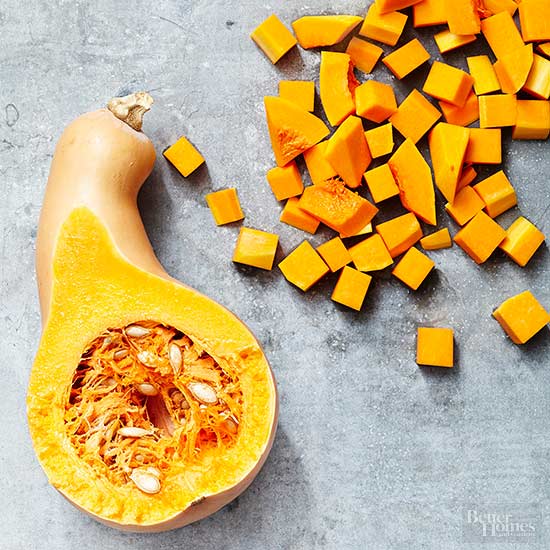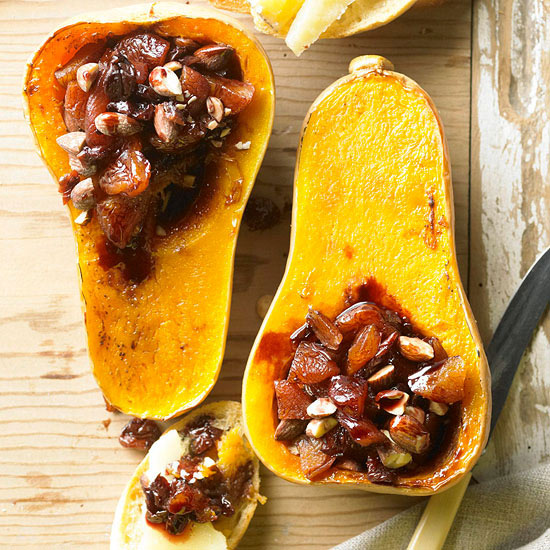






It's easy to grow most vegetables, including butternut squash, from seeds. Buy a packet of seeds to plant outdoors after all danger of frost is gone and the soil temperature warms, about 60 to 65 degrees F at a depth of 4 inches.
Northern gardeners may want to start their own seeds indoors about four weeks before planting. Be sure to acclimate the young seedlings to outdoor life before you place them in the garden, following a process called hardening off. For about two weeks before transplanting into the garden, start by setting the tiny plants outdoors for a few hours in the shade during the warmest part of the day. Bring them back inside every evening. Each day, leave the plants out a little longer and expose them to a little more sunlight. Always protect young plants from wind and danger of freezing.
continue reading belowSeed packets contain all the information you need about how deep to plant and how far to space plants. Butternut squash takes up a lot of space in the garden, with 5- to 6-foot-long vines. Although small varieties of winter squash, such as acorn or delicata, can be trained upward on a trellis, butternut squash is too heavy and should be grown on the ground.
Plant butternut squash in 4- to 5-inch-tall mounds of soil called hills. Begin by planting four or five seeds per hill, then remove all but the strongest two or three plants once the new plants are growing well.
Butternut squash needs about 1 inch of water per week to grow well. If it hasn't rained, water deeply once a week. Watering enough to just wet the surface of the soil doesn't help. Water in the morning to allow moisture to evaporate off leaf surfaces. Wet leaves can rot.
Butternut squash roots grow close to the surface of the soil, so avoid deep weeding near the vines. For best results, pull small weeds by hand as they emerge.
Harvest the fruits in the fall before a hard freeze. Cut the vine a few inches away from the top of the squash, and leave the squash on the ground for a week or two to help dry and toughen the skin. At this stage, the skin of the squash is still soft, so be careful not to cut or bruise it.
Butternut squash can be stored for three to six months in a cool, dry location such as a basement or garage. Protect squash from freezing temperatures. Avoid refrigerator storage, which is too humid for squash and can cause rot. Hold them gently to avoid bruising.
You can cook and freeze squash for later use.
All squash varieties grow during the summer. So why are butternut, acorn, buttercup, Hubbard, spaghetti squash, and others called "winter" squash? It's because their hard rinds protect the flesh inside, allowing the squash to be kept and stored over winter.
Summer squash include types with thin skins, such as zucchini, straightneck, crookneck, scallop, and pattypan. These squashes should be used within a few days of harvest.

Butternut squash's sweet goodness packs a powerhouse nutritional punch. Winter squash is an excellent source of fiber, which is helpful for intestinal health. It's also a source of potassium, niacin, iron, and beta carotene that converts to vitamin A, which aids skin, vision, and bone health.
Try these delicious recipes:
Our Best Butternut Squash Recipes
Butternut Squash Mac and Cheese
Butternut Squash Soup with Ravioli
Learn How to Cook Butternut Squash
Copyright © www.100flowers.win Botanic Garden All Rights Reserved